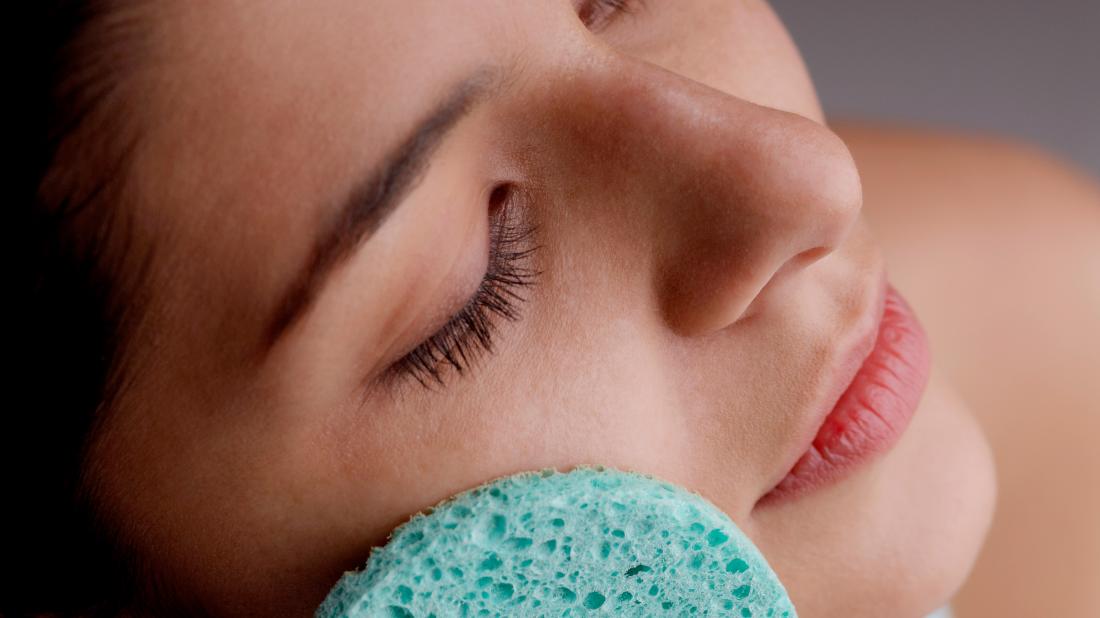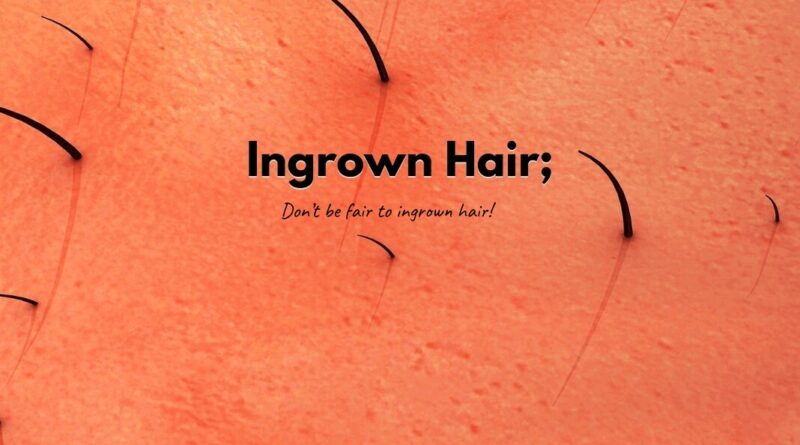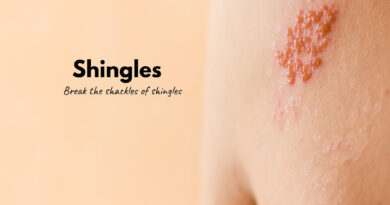Trying to Remove Ingrown Hair? Here Is How You Can Get Rid of Them
Okay, let’s be frank. Everyone knows what ingrown hairs are and just how troublesome they are. It takes a lot of effort to make your skin silky and smooth and so it’s only natural that you get annoyed when you end up with ingrown hairs.
Not only can it be rather excruciating to get rid of them, but if you do something wrong in the process, you can even end up causing more harm than doing good to your skin. Are you fed up with ingrown hairs and want to know how you can naturally get rid of them, here are all the right steps to follow. Take a look.
Table of Contents
There are a few things that can trigger the problem:
Hair removal methods (waxing, shaving, applying depilatory creams) and environmental factors (oil secretion, sweating, and friction from wearing too-tight pants or working out) — the chance of it occurring increases when the hair is naturally coarse, curly, and wiry. So, when an ingrown pops up, what do you do?
Di-Qing Luo from the National Library of Medicine(1) stated that earlier they had underestimated the disease by thinking it does not occur in many people. Eventually, they found out that many people have been diagnosed with this problem of ingrown hair with multiple recurrences.
How to Get Rid of Ingrown Hair Using Naturopathic Remedies
- Natural Remedies
- Essential Oils
- Home Remedies
- Herbs
- Alternative Treatments
What Are the Causes of Ingrown Hair?
The American Academy of Dermatology(2), calling this condition ‘folliculitis’ claims there are many reasons which can cause ingrown hair, like wearing tight clothes, constantly shaving with a wrong method, gaining weight, etc.
Although anyone can get an ingrown hair, it is most common in people with curly or coarse hair; curly hair tends to grow back after being cut or shaved. This can irritate the skin and also form cysts, which can get inflamed to infect. Tweezing out of hair is another reason for it as it often leaves hair fragment beneath the skin surface. Hence, one must know what to do for ingrown hair.
Hair is the second-fastest-growing tissue in our body.
What to do for Ingrown Hair?
The problem can be resolved with a variety of home remedies for ingrown hair, which is simple to follow.
CURE 1: Natural Remedies for Ingrown Hair
1. Stop Removing the Hair in the affected area
Why does this work?
Continuing to shave in the affected area will make it worse. It could also lead to skin inflammation and infection or leave marks behind.
How to use?
If you do have to shave under some circumstances, make sure you use a soft touch razor and move it in one direction. Always change its blades after one or two uses.
How often?
Try not to use the razor more than once or twice in three months. It is better to choose to wax instead.
2. Apply Warm Cloth
Why does this work?
Apply a warm cloth on the area to soften the skin and remove the dead skin. This allows the ingrown hair to come out from the clogged pores.
How to use?
Dip a piece of cloth in warm water and squeeze the water out. Then apply the cloth on the skin in a circular motion. You can use a soft toothbrush or cotton instead.
How much to do?
Do it at least three to four times a week to keep the pores clean and soft.
3. Remove the Dead Skin

Why does this work?
Removal of dead skin unclogs the pores and allows the bent hair to grow outward.
How to do?
Gently wash the aggravated part to exfoliate it. You can do it regularly while bathing to get rid of severe ingrown hair but make sure not to apply excess of soap in that area as it might block the skin pores.
How often to do?
If not doing it regularly while bathing makes sure you do it three to four times a week to remove ingrown hair.

4. Gently Remove Hair
Why does this work?
Once the hair is gradually coming out from the pore and only a little part of it is inside, then you can pull it out.
How to do?
Use a needle for pulling out the hair but not tweezers as it can break the hair in two. Apply a warm cloth on the area to soften it before pulling out the hair. Don’t break the skin as it can cause infection.
How much to do?
Do not make it a regular practice. Do it once in 3-4 months.
5. Use a Single Blade Razor
Why does this work?
They are special razors made to remove ingrown hair. If you cannot get a hold of this just buy a single blade razor. They make clean cuts and remove the hair properly.
How to use?
Use the razor in the opposite direction of the hair growth. Do not constantly change directions as it further increases the ingrown hair.
How often to use?
Use it only once or twice in three to four months. Constant usage of razor darkens the skin.
6. Wear Loose Clothes

Why does this work?
Wearing tight clothes like skinny jeans, tight underpants, nylon leggings does not allow the skin to breathe and can breed infection. It also directs the hair in the wrong direction, which then leads to ingrown hair.
What to wear instead?
Wearing tightly fitting clothes may be in fashion, but it does not keep the health of your skin in check. If you have many aggravated patches your skin, it is advisable to wear loosely fitting clothes to prevent ingrown hair.
CURE 2: Essential oil for Ingrown Hair
1. Tea tree oil for Ingrown Hair
Why does this work?
Tea tree oil for ingrown hair has many healing properties which are very beneficial. It has antiseptic, antibacterial and anti-inflammatory properties.
How to use?
You can dilute the oil by adding a few drops in a cup of water which can then be applied to the skin.
How much to use?
For best results use it twice a day for one to two months regularly.
2. Castor Oil
Why does this work?
It helps in nourishing the skin and cleaning impurities. Once used, it leaves the skin clean and soft, after which it is easier to pull partially out hair using a needle.
How to use?
It can be applied directly on the skin. Use a cotton ball to apply it on the aggravated area and leave it on for a few minutes. You can do this as long as your ingrown hairs remain. It is safe to use anywhere on the body, including the pubic area.
How much to use?
You can use it twice a day and continue for three to four months to fix ingrown hair.
3. Lavender Oil

Why does this work?
This essential oil for ingrown hair has soothing properties, which keep the skin rejuvenated.
How to use?
Add seven to eight drops of lavender oil in half a cup of coconut oil and can be applied to ingrown hair. Mix it with an electric mixer. In about five minutes, you will have a thick white mixture that is ready to use.
How much to use?
Use it two to three times a day. In the case of the oil causes irritation, it is advisable to consult a doctor or dermatologist.
CURE 3: Home Remedies for Ingrown Hair
Some home remedies which can treat ingrown hair are sugar, baking soda, honey, aloe vera, lemon juice, oatmeal, coffee, yogurt, salt, potato peel, etc.
1. Apple Cider Vinegar
Why does this work?
Apple cider vinegar has antibacterial properties that clear away dead skin cells away, which open up closed pores and allow ingrown hair to come out.
How to use?
Soak a cotton ball in apple cider vinegar and clean the affected area from it after it dries clean it with plain slightly warm water.
How much to use?
Try to do this remedy twice a day. It’s a very easy remedy to be done at home.
2. Sugar
Why does this work?
Sugar acts as a natural exfoliator by removing dead skin cells from the body. It also treats skin infection and irritation caused by ingrown hair.
How to use?
It can be used in the form of a scrub. Add olive oil or jojoba oil to a cup of sugar. Essential oils like lavender oil and tea tree oil can also be added. Make a smooth mixture of it in a bowl and apply it on the affected skin with a brush in a circular motion.
How much to use?
Use it twice a week to cure ingrown hair. If the results are evident, make sure you continue to use it for several months.
3. Honey

Why does this work?
Honey is an antiseptic agent that reduces swelling and inflammation. It also moisturizes the skin and hydrates it.
How to use?
It can be applied directly to the infected area. Massage honey on the aggravated area and leave for ten minutes. Then wash it with lukewarm water.
How much to use?
Apply it twice or thrice a week. It is one of the best home remedies for ingrown hair.
4. Aloe Vera
Why does this work?
The antibacterial and anti-inflammatory properties of aloe vera soothes the skin and quickens the healing process.
How to use?
Cut a fresh piece of aloe vera from the middle and then scoop out the gel from a spoon. Then apply the gel on the skin and leave for 30 minutes. Once dry wash it properly and apply some rose water on it.
How much to use?
Use it at least three to four times a week to see quick results and prevent ingrown hair.
5. Oatmeal
Why does this work?
Applying oatmeal on the aggravated area can greatly reduce the redness and irritation due to ingrown hair. It acts as a soothing agent and also has anti-inflammatory and antioxidant properties, which are greatly beneficial.
How to use?
Roughly ground oatmeal and if desired, add yogurt and honey in it. Once mixed, make a smooth paste of it and apply it on the affected area. If not adding honey and yogurt, then simple water would do. Apply it with hands or brush and then wash it after 40 minutes with warm water.
How much to use?
Do this home remedy for ingrown hair thrice a week. It works best for the pubic region where ingrown hair causes the most irritation.
CURE 4: Herbs
1. Turmeric
Why does this work?
Turmeric kills bacteria and also removes the marks on the skin. It is advisable to use turmeric if your ingrown hair gets infected.
How to use?
Mix a pinch of turmeric in 4-5 spoons of water. Make a paste out of it and apply it on the ingrown hair.
How much to use?
Use this remedy thrice in a week to cure ingrown hair.
2. Fenugreek

Why does this work?
It works an effective antiseptic. If you have redness or irritation due to ingrown hair then, use this remedy.
How to use?
Boil a spoonful of fenugreek in a cup of water. Strain the water, dip a cotton ball in it and apply on the ingrown hair.
How much to use?
Do this 3-4 times in a week to see good results.
3. Black Tea
Why does this work?
Black tea is rich in tannic acid, which reduces inflammation caused by an ingrown hair. It also soothes the skin by reducing itching and redness.
How to use?
You can directly rub the tea bags on the aggravated area. Otherwise, boil tea in water, strain the water and wash the area with the water.
How much to use?
You can use this remedy every week to treat ingrown hair.
4. Witch Hazel

Why does it work?
It is important for ingrown hair as it has healing properties along with being anti-inflammatory and antiseptic.
How to use?
It can be used in the form of dry extract. Boil a pinch of it in one cup of boiling water, strain it and drink.
How much to use?
It is advisable to drink it every morning to treat ingrown hair.
CURE 5: Alternative Treatments
1. Electrolysis
Why does it work?
If you are still not satisfied with the natural home remedies and you think your problem is not being cured, then you can go for an alternative treatment like electrolysis. Electrolysis permanently inhibits the hair follicle’s ability to grow hair.
How to get it done and how often?
When the aggravated area is treated with electrolysis, the growing capacity of hair in that area is eliminated. Hence you won’t have to get it done again. Consult your doctor regarding when would be the best time to do it.
2. Laser removal
Why does it work?
In laser removal, the light from the laser gun is absorbed by the hair follicle, which then destroys the hair. Statistics prove that 90% of laser treatments have been effective until now.
How to get it done and how often?
Your doctor will take care of the procedure for you. Also, if you are not satisfied with the first session, you can go for a second session as well. Make sure there is a break of 2-3 months between each session.
When to Visit the Doctor?
Sometimes an ingrown hair can become infected and lead to further complications like hair loss, scarring, razor bumps, hyperpigmentation, hair follicle destruction, etc. If the condition worsens and the infection spreads, then it is highly advisable to visit a doctor. Usually, the doctor can identify the infected hair and treat it or remove it.
However, in some cases, the doctor may also prescribe some medicines which should be taken regularly.
In the end, it is important to realize that they are just ingrown hair and nothing else. Stressing over it and picking and popping the hair will only further aggravate them leaving you feeling more frustrated.
Hence it is best to leave them to clear up on their own, which in most cases do. You might sometimes feel uncomfortable about or feel conscious when somebody else points it for you, but again, it is best to ignore and wait for them to disappear on their own.
Each strand of hair can contain traces of 14 different elements (including gold).
FAQs
1. How long does it take for ingrown hair to heal?
There is no fixed time as to how long will it take for them to heal. Sometimes they might get cured on their own, or sometimes they can be treated with natural home remedies.
2. Do men and women both have ingrown hair?
Yes, both men and women have an ingrown hair, but the area might vary. While women are prone to have them on the armpits or pubic region, men have them on their face.
3. Does ingrown hair get hard?
It is not the hair that is hard but the cyst or pore from which it grows. The pore can be hard, soft, small, large, or puss-filled.




